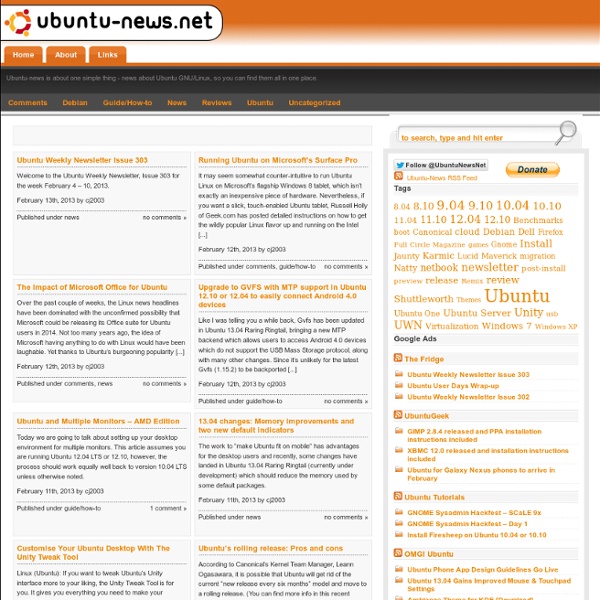



Official Ubuntu Documentation 10 Things To Do After Installing Ubuntu 12.10 After the thrill of downloading it, and the jagged nerves from installing it, you may be wondering what to do next with your freshly installed copy of Ubuntu. That question is especially true if you’re new to Ubuntu or haven’t used it for a while. So, to help get you settled, we’ve listed our top 10 post-install must-dos… 1. Whether you’re new to Ubuntu or are already a fan, the latest version of the OS sports some slick new features that are worth knowing about. To bring you fully up-to-speed we’ve primed a video run-down of the 10 most exciting new features in Ubuntu 12.10… 2. You may have a fresh install of a brand new release but that’s doesn’t mean it’s a finished product; there may be a few last-minute bug fixes ready and waiting to be installed. Typically Ubuntu will automatically check for new updates every few days but as this is ‘day one’ for you we’ll need to do this manually. Open the Dash (by clicking the button at the top of the screen) and search for ‘Software Updater’. 3. 4.
[IMAGE] Desktop Maverick - From Also see info about the most recent LTS version, Precise Pangolin (12.04 LTS). Introduction On October 10, 2010, Ubuntu 10.10 was released. This guide is maintained at the Linux Center of the University of Latvia. Please help test and perfect this guide. General Notes General Notes This is the original Ubuntuguide. Text inside the grey dotted box like this should be put into the command-line Terminal. Many changes to the operating system can only be done by a User with Administrative privileges. sudo bash 'gksudo' can be used instead of 'sudo' when opening a Graphical Application through the "Run Command" dialog box or as a menu item. gksudo gedit /etc/apt/sources.list Many file management tasks can be accomplished with root Administrative privileges by starting the Nautilus file manager in a similar fashion. gksudo nautilus or sudo nautilus "man" command can be used to find help manual for a command. man sudo sudo apt-get install package Other versions Open the command terminal and type: Run:
Top 10 Ubuntu app downloads for September 2012 Here’s another installment of our monthly app charts. Stay up to date with all that’s new in the Software Centre and check out last month’s top 10 Ubuntu app downloads! Top 10 paid apps Top 10 free apps Would you like to see your app featured in this list and on millions of user’s computers? If you’re just getting your feet wet, check out how to get started with your first app in Ubuntu ›If you’ve got an existing app you’d like deliver to the world, submit it to the Ubuntu Software Centre › Notes: The lists of top 10 app downloads includes only those applications submitted through My Apps on the Ubuntu App Developer Site. Follow Ubuntu App Development on: Social Media Icons by Paul Robert Lloyd
Top 100 of the Best (Useful) OpenSource Applications The following is a list of about 100 of the best OpenSource Applications, that actually help make Linux more usable for people. It is my hope that this list shows potential Linux users that there really is a large, effective, productive and usable range of free, OpenSource applications. The majority of these applications can be installed by either apt-get or synaptic, however I’ve included the web site addresses of these applications so that you can obtain more information. This list took a long time to put together and I tried to keep it in alphabetical order for you. – You might want to bookmark this and come back later. Enjoy! Ardour: ( Ardour is a digital audio workstation. Ardour capabilities include: multichannel recording, non-destructive editing with unlimited undo/redo, full automation support, a powerful mixer, unlimited tracks/busses/plugins, timecode synchronization, and hardware control from surfaces like the Mackie Control Universal. Record live audio.